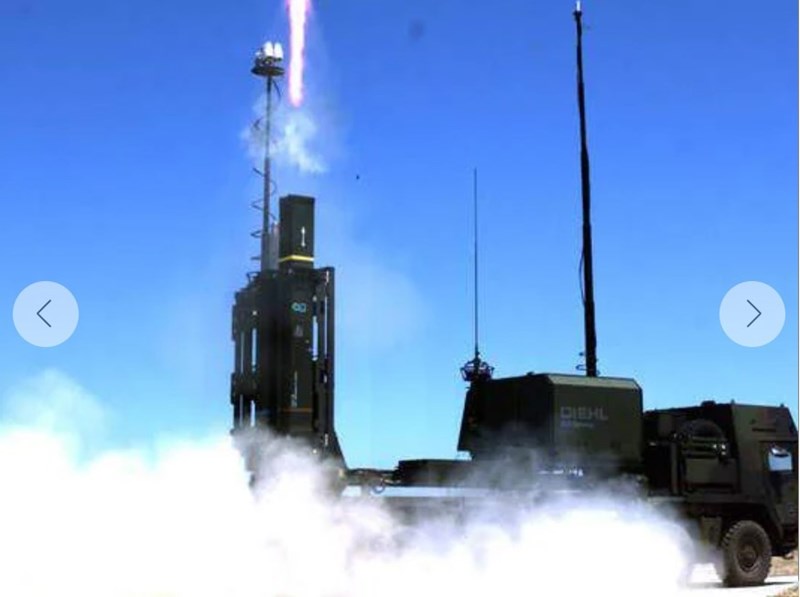US mobile expeditionary base to the South China Sea
Satellite imagery shows the amphibious ship USS Miguel Keith, the US military’s mobile expeditionary base, entering the South China Sea for the first time on March 21.
The South China Sea Strategic Situation Initiative (SCSPI), a Beijing-based organization, yesterday announced analysis of satellite imagery showing the US amphibious assault ship USS Miguel Keith and the Arleigh Burke-class destroyer passing through the Bashi Strait to enter waters southwest of the South China Sea on 21 March. March.
SCSPI said this was the first time the USS Miguel Keith had entered the South China Sea since the ship was deployed to the Western Pacific in October 2021.
Weighing over 90,000 tonnes, the USS Miguel Keith is one of the largest warships, second only to the super carrier. America. The USS Miguel Keith is the third ship of the Lewis B. Puller class, which can perform several mobile expeditionary base missions, such as serving as a heavy helicopter landing site, providing logistical support, or operating as a base. command and control center.

The amphibious assault ship USS Miguel Keith sails in the Pacific Ocean in August 2021. Photo: US Navy.
A Chinese military expert said the country should pay close attention to the activities of the USS Miguel Keith and find ways to respond, as the ship’s presence in the South China Sea could “significantly increase its operational capabilities” for US forces in the region. .
According to SCSPI, the USS Miguel Keith played a key role in the joint US-Japan Noble Fusion exercise in February. SCSPI also predicts that the USS Miguel Keith may participate in many military exercises and events in Vietnam. South China Sea and surrounding areas due to its multi-tasking nature.
America and Western countries like England, France and virtue The recent increase in military presence and freedom of navigation patrols in the South China Sea, in the context of rising tensions due to China’s naval expansion and establishment of military outposts on artificial islands reclaimed from the South China Sea permits in the area.
The US has repeatedly challenged China’s preposterous claims in the region, accusing it of militarizing the South China Sea and threatening neighboring countries. US Department of Marine, International Environment, and Scientific Affairs Department of State on January 12 document publication 47 pages refute the geographical and historical basis of China’s illegal claims in the South China Sea.
Admiral John Aquilino, commander of the US Indo-Pacific Command (USINDOPACOM), last weekend accused China of appearing to have completed construction of missile depots, hangars, radar systems and other military installations on Mischief Reef, Subi Reef and Fiery Cross Reef, but it was not clear if they were. will build additional military infrastructure on other features.
Aquilino said this action is completely against China’s commitment that it will not turn artificial islands into military bases. He considered this as part of the process of consolidating China’s military power.
Mischief Reef, Subi Reef, and Cross Reef are three of seven features in Vietnam’s Truong Sa archipelago that China has illegally occupied and built into artificial islands. The remaining entities are the Ga Ven stone, the Tu Nghia stone, the Gac Ma stone and the Chau Vien stone.

East Sea region. graphic: CSIS.
During a press conference in Beijing on March 22, when reporters Kyodo News Asked about Admiral Aquilino’s remarks, Chinese Foreign Ministry spokesman Wang Wenbin bluntly said that Beijing “has the right to deploy necessary defense facilities” on what he called China’s “territory”.
Wang also said China’s actions were “in accordance with international law and no one is to blame”, ignoring the fact that the Permanent Court of Arbitration (PCA) in 2016 rejected the claim. in the East Sea as well as features in this sea.
According to a Chinese foreign ministry spokesman, US military activities in the region are aimed at “stirring up trouble and provoking action” and “undermining maritime order and security in the South China Sea”.
Vietnam has repeatedly asserted that it has sufficient historical evidence and legal basis to assert its sovereignty over the Hoang Sa and Truong Sa islands, in accordance with international law.
Any action that violates Vietnam’s sovereignty over the Hoang Sa and Truong Sa islands, and Vietnam’s sovereign rights and jurisdiction over their waters is null and void, is not recognized, and Vietnam firmly opposes it,” said Foreign Ministry spokesman Le Thi Thu Hang. .
The Foreign Ministry Spokesperson asked the parties not to take actions that complicate the situation, actively contribute to maintaining peace and stability in the East Sea, and create a conducive environment for negotiations on the Code of Conduct in the South China Sea. (KPK).
Ngoc Anh – Huyen Le (Based on AP, Global Times)
at Blogtuan.info – Source: vnexpress.net – Read the original article here



